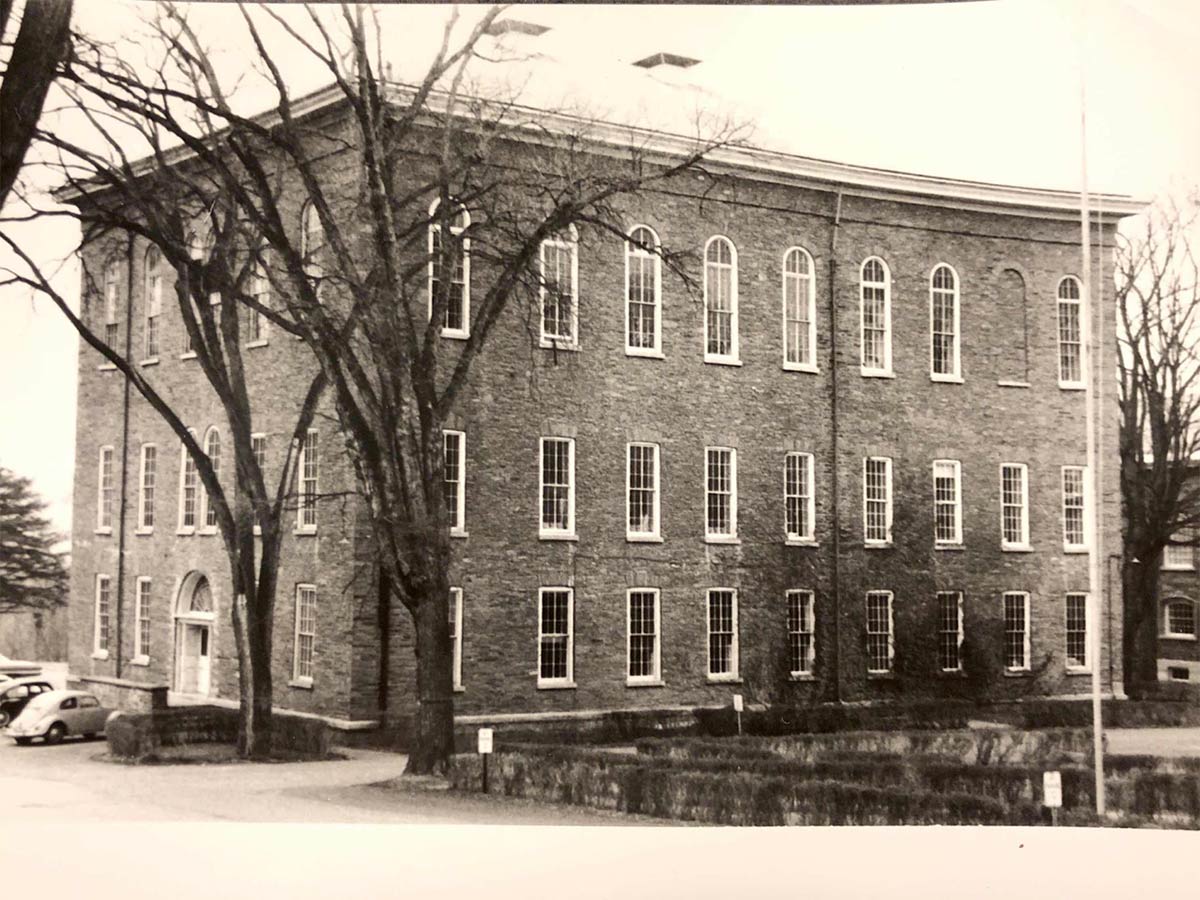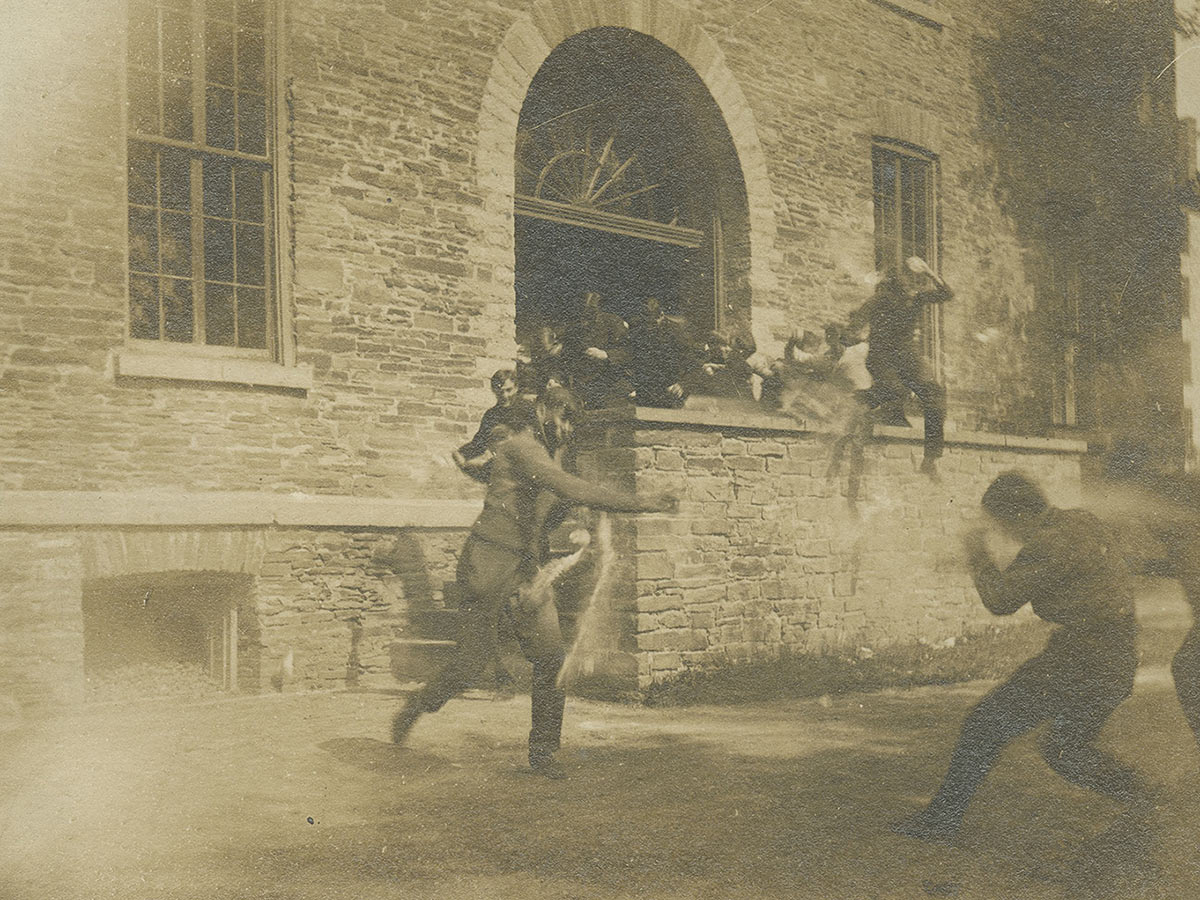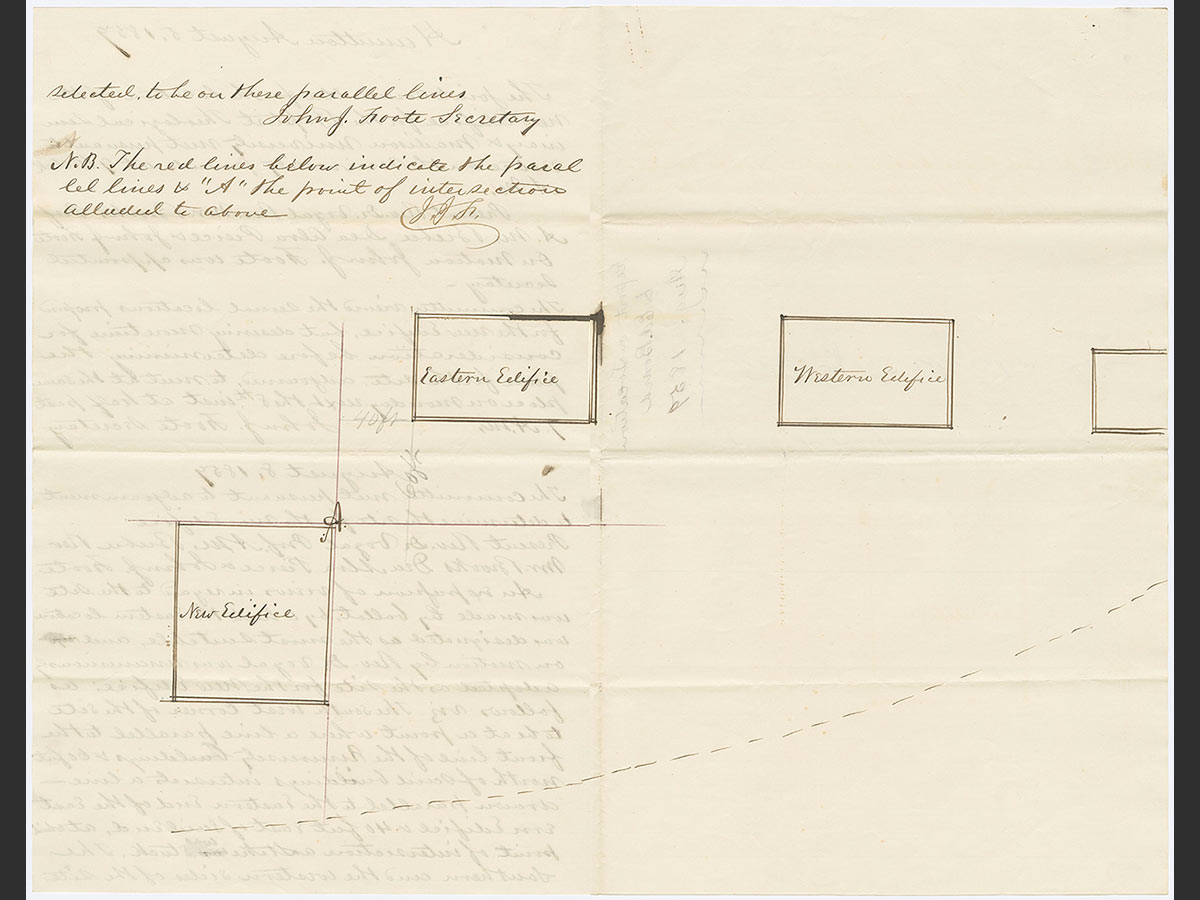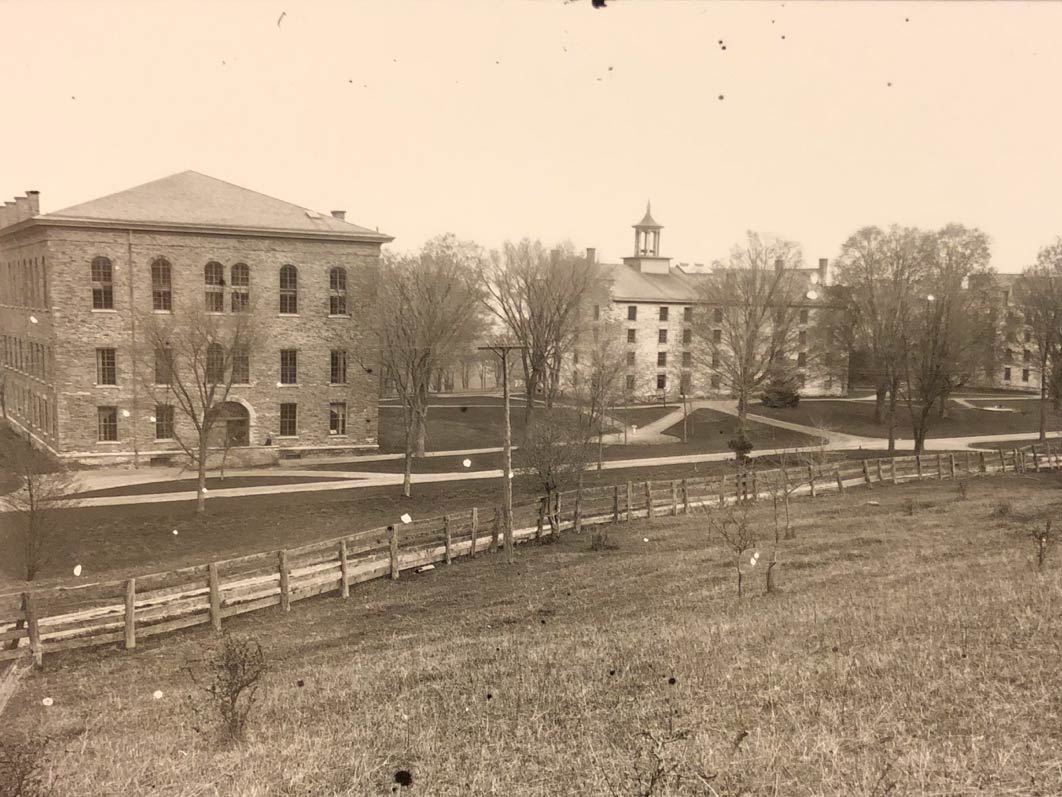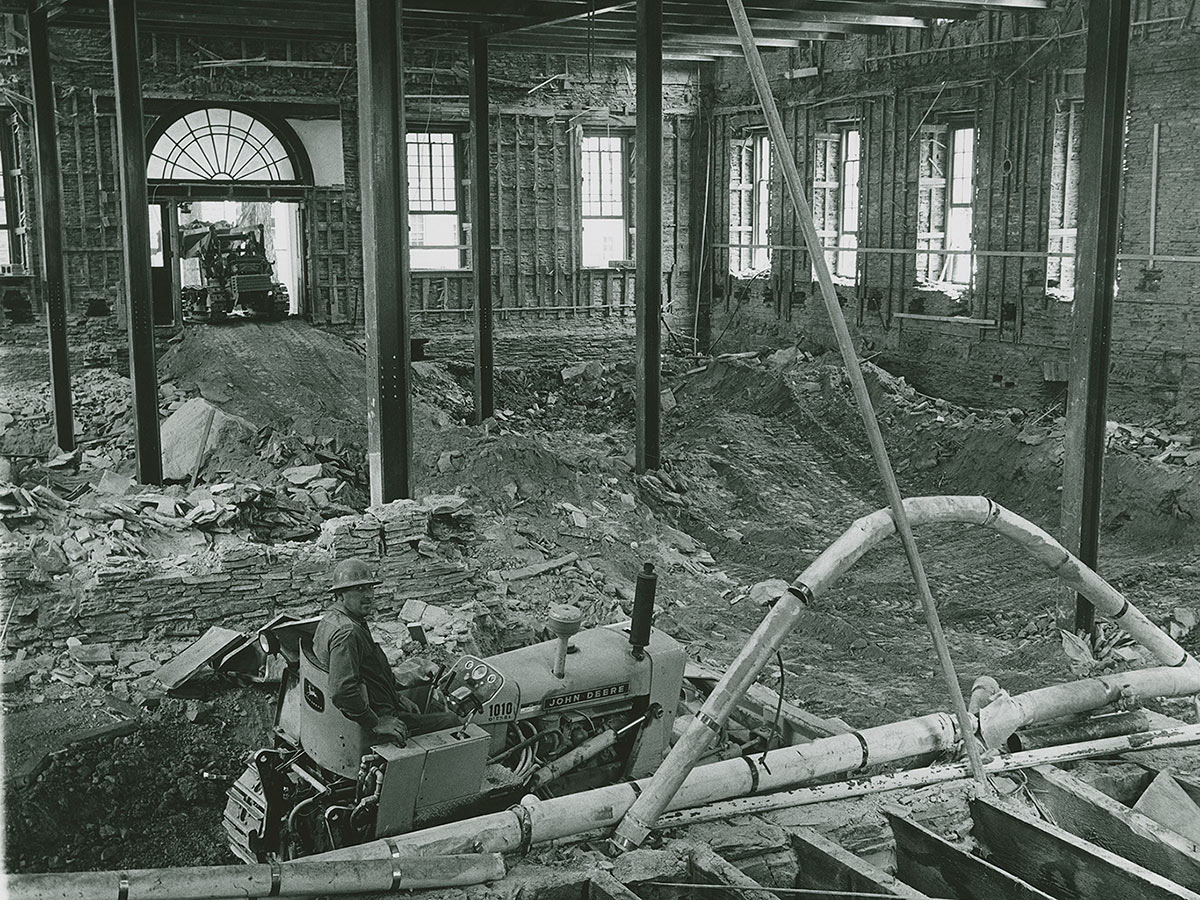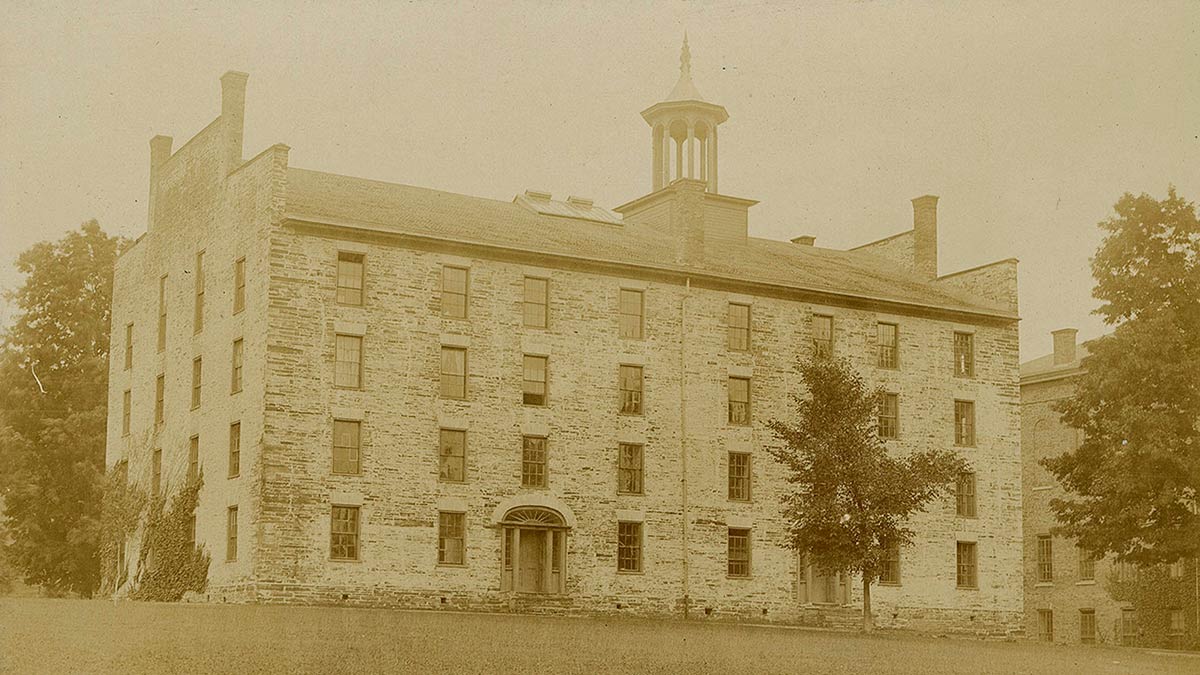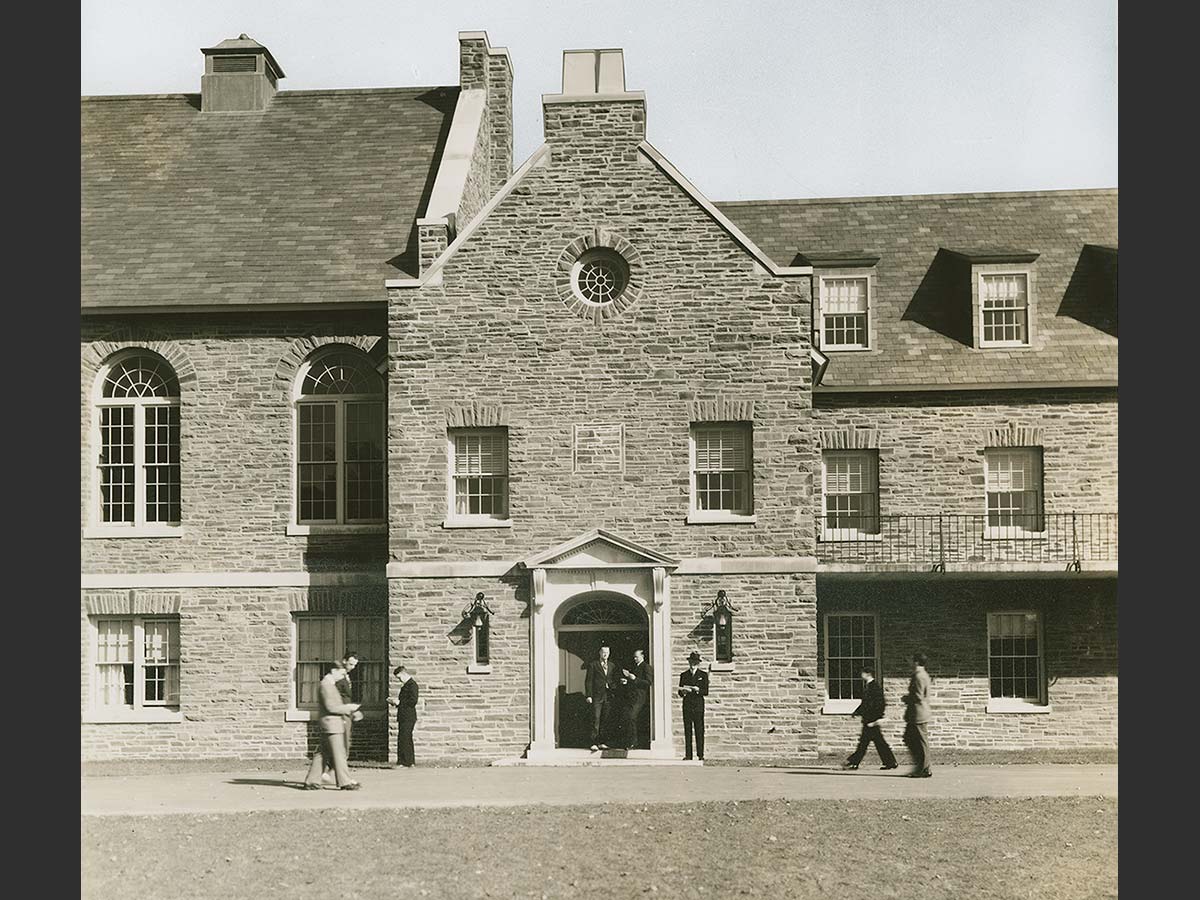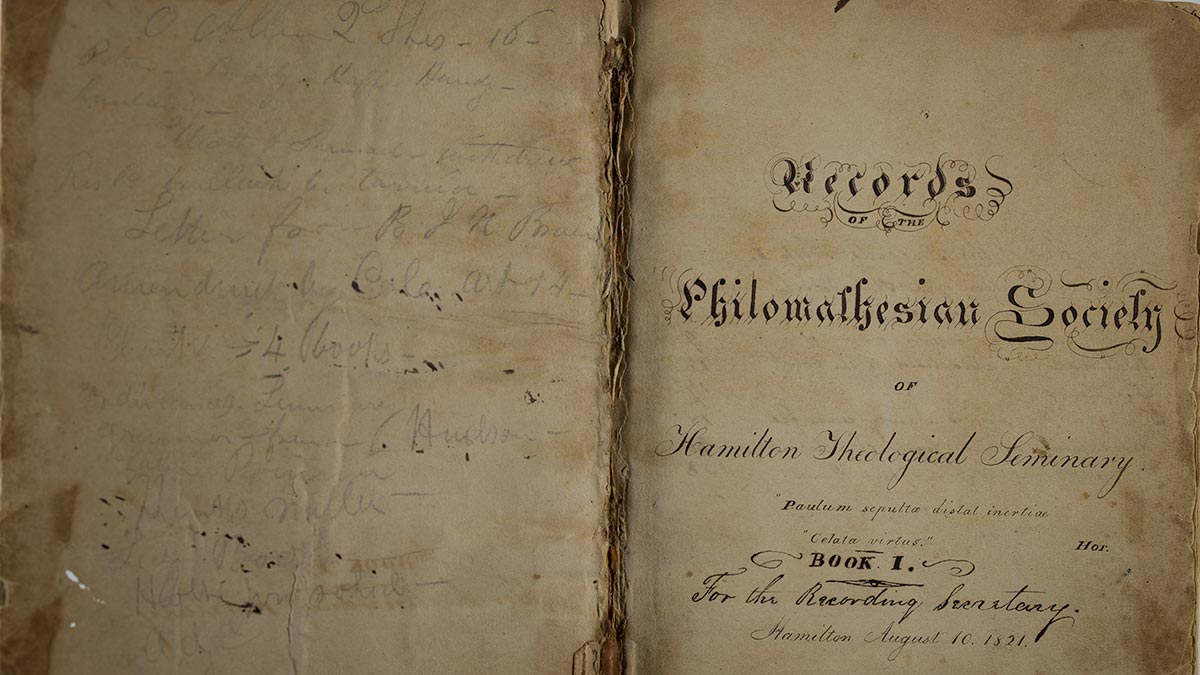
By Colgate Communications
In spring 2018, students taking the course HIST 114 History of Colgate took to the archives to uncover forgotten and lesser-known aspects of the school’s past. Andres Gonzalez ’21 discovered that for nearly 100 years, the Hall of Alumni and Friends — today, the unassuming Alumni Hall — served as the pinnacle of the campus. This story is largely derived, with permission, from his writing and research.
1859Open Primary tabs configuration options

